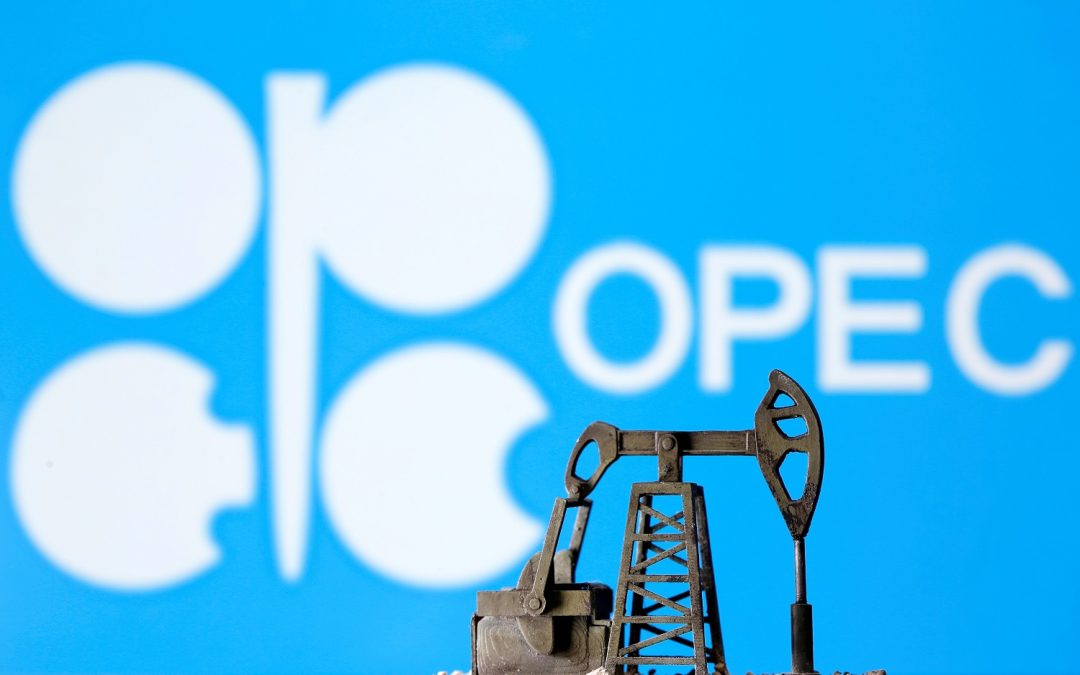Little wavering from OPEC and its partner nations on supply curbs is expected in the near future after the cartel and its partners agreed last week to largely hold curbs in place for another month.
Crude pricing has been climbing in recent months as economic growth continues to develop, particularly in the industrial and manufacturing sectors, buoyed further by the recent outages in Texas on the back of storm-induced power outages.

Just seven of 18 refineries in Texas were operational as of the start of this week (8 March), according to ICIS data and, with power dropping suddenly as the state’s power grid failed, not all players had the opportunity to bring facilities offline in a controlled way. This could see necessary repairs push back restart schedules.
“Many plants face heavy repairs on key processes and these outages have led to a continued drop in refined products supply in the region,” said ICIS analyst Ajay Parmar.
The outages have significantly tightened refinery output in North America pushing utilisation rates in late February to 41%, the lowest on record, although downstream production was also flattened by the storms, meaning that demand has also dropped.
Supply is likely to be constrained until later in the month, according to Parmar.
“Looking forward, most of the affected refineries are expected to be back to near normal rates by the third week of March, bringing oil products supply stability back to the US as a whole,” he said.
The attacks on Saudi oil storage terminal infrastructure in RasTanura by the Yemeni rebel group the Houthi movement also sent prices spiking.
State producer Saudi Aramco demonstrated following the far more extensive damage from an Iranian drone attack on oil production assets that it is capable of bringing large-scale capacity back onstream in extremely tight timeframes, and markets quickly calmed in the days after the attack.
Nevertheless, the increasing frequency of attacks on Saudi production assets means that the market may begin to price that risk in, according to Parmar.
“Although no damage was incurred, traders are now likely to price in a higher likelihood of attack in the future,” he said.
Leaving aside the series of shocks the market has endured amid the wider calamity of the pandemic, pricing has been on a steady upward trend, as industrial output across most of the world rallied to levels not seen in years.
Brent May futures pricing on Friday (12 March) was within striking distance of the $70/bbl mark, and WTI is trading comfortably above $65/bbl.
With the rollout of vaccines across much of the world continuing apace, conditions are expected to continue to rally as we move further into the year, indicating that the decision by the OPEC+ group of countries to keep production curbs in place for another month is driven by a desire to push pricing even higher. The market had been expecting an increase of 1.5m bbl/day.
The step also illustrates the extent that OPEC is willing to try to influence the market, after years of attempting to balance the market, leading at times to increasingly vocal criticism of the US shale sector that has thwarted its attempt to match supply to demand. The US unconventional oil and gas sector is made up of lots of smaller firms that have been decimated by the 2020 pandemic.
“The move shows that OPEC+ are willing to intervene in the market for much longer and much deeper than previously expected, and they now have minimal fear of US oil production returning due to higher prices,” Parmar said.
A look at OPEC’s production last month illustrates the extent that Saudi Arabia is prepared to drive the cuts. According to data from secondary sources, Saudi cuts of 930,000 bbl/day almost single-handedly offset increases by most other member states.
Although crude pricing continues firm, OPEC risks surrendering market share as pricing entices producers to ramp up output, according to ICIS global crude editor Sophie Udubasceanu. The uptick could be strong enough to entice more smaller shale players back onto the scene, she added.
“Oil prices have long passed breakeven levels for US shale oil, and with further encouragement, US oil production may continue to thrive,” she said.
“2020’s dire economic conditions managed to wipe out some smaller US producers with a multi-year high reached for bankruptcies in the oil sector as early as August. Despite those unlucky ones, those left in the market should strike while the iron is hot,” she added.
Actions by Saudi Arabia itself could also cap gains, with the 1m bbl/day it has kept off the market representing a substantial cliff face of capacity to be eased back into global supply.
“Before long, Saudi Arabia will release its 1m bbl/day in the market and, even if it does so gradually, oil traders may be unforgiving in what I anticipate will be a huge sell-off,” Udubasceanu said.
Crude demand is likely to remain below 2019 levels this year despite a substantial year-on-year uptick in consumption compared to 2020, according to OPEC. Global oil demand is likely to grow by 5.6m bbl/day this year after collapsing by an average of 9.6m bbl/day the previous year, while non-OPEC supply is likely to grow 1m bbl/day after falling 2.6m bbl/day in 2020.
Expectations for the demand in the first half of the year have weakened as transport sector weakness looks set to continue.
Summer holiday booking demand in some countries hints at the extent of pent-up demand for travel amid a widespread increase in savings during the pandemic, meaning that second-half consumption may be set to grow substantially.
While rising prices may lead to supply dilution as incumbents ramp up production and wildcatters return to the shale plays, the gradual thawing of the global economy expected over the course of 2021, OPEC’s clear focus on keeping ricing robust, and the effect of measures such as the US stimulus bill are likely to keep values robust through the next few months.
Source: Hellenic Shipping






